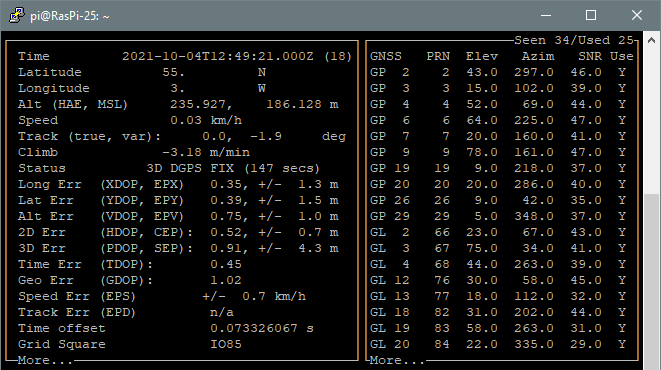

- Raspberry pi install socat 1080p#
- Raspberry pi install socat mod#
- Raspberry pi install socat serial#
- Raspberry pi install socat password#
- Raspberry pi install socat tv#
I'm writing it down for my own use and on the off-chance that someone else might find some part of it useful. I'm a lazy person and this method works reasonably well for my purposes, but these instructions won't be compatible with most people's needs. Note: this information is not meant as instructions, and I don't recommend you implement any of these changes without understanding what you're doing. This will ensure that your automation scripts don't randomly break when the DHCP address changes.Lazy Hardened Void Linux on Raspberry Pi Lazy Hardened Void Linux on Raspberry Pi I also recommend using DHCP reservations on your router to lock in the IP address from each PI.
Raspberry pi install socat tv#
I then restored that backup to 5 more Raspberry PI's, one for every TV in the house.
Enable instant DVD play when disk is detected. Disable unsafe shutdown warning (from the RaspBMC menu).  Set Overclock (fast) (from the RaspBMC menu). Set the region and timezone (sets the weather to Celsius and the time). Exit Nano after saving and type "chmod 755 socat" followed by "update-rc.d socat defaults". # Carry out specific functions when asked to by the system case "$1" in start) echo "Starting script socat " echo "Could do more here" stop) echo "Stopping script socat" echo "Could do more here" *)chmod 755 /etc/init.d/socat update-rc.d socat defaultsĮcho "Usage: /etc/init.d/socat " exit 1 esac # Some things that run always socat tcp-l:54321,reuseaddr,fork file:/dev/ttyUSB0 #! /bin/sh # /etc/init.d/socat # BEGIN INIT INFO # Provides: socat # Required-Start: $local_fs $network # Required-Stop: $local_fs # Default-Start: 2 3 4 5 # Default-Stop: 0 1 6 # Short-Description: socat loader # Description: socat loader # END INIT INFO type "nano /etc/init.d/socat" and paste the following text.
Set Overclock (fast) (from the RaspBMC menu). Set the region and timezone (sets the weather to Celsius and the time). Exit Nano after saving and type "chmod 755 socat" followed by "update-rc.d socat defaults". # Carry out specific functions when asked to by the system case "$1" in start) echo "Starting script socat " echo "Could do more here" stop) echo "Stopping script socat" echo "Could do more here" *)chmod 755 /etc/init.d/socat update-rc.d socat defaultsĮcho "Usage: /etc/init.d/socat " exit 1 esac # Some things that run always socat tcp-l:54321,reuseaddr,fork file:/dev/ttyUSB0 #! /bin/sh # /etc/init.d/socat # BEGIN INIT INFO # Provides: socat # Required-Start: $local_fs $network # Required-Stop: $local_fs # Default-Start: 2 3 4 5 # Default-Stop: 0 1 6 # Short-Description: socat loader # Description: socat loader # END INIT INFO type "nano /etc/init.d/socat" and paste the following text. 
Install socat by typing "apt-get install socat".
Raspberry pi install socat serial#
If the serial command doesn't work use "stty -F /dev/ttyUSB0" to check the default Baud rate, it may be wrong or you may require a null modem/straight RS232 cable. "echo "mc 01 08" > /dev/ttyUSB0" where "MC 01 08" is one of the TV serial commands you can test (like ON) To test the serial port type this on the command line. Login to SSH with the root account again. Plug in the USB to serial adapter and reboot, you should now have a /dev/ttyUSBo device. to check if keys installed right type "/opt/vc/bin/vcgencmd codec_enabled MPG2" and "/opt/vc/bin/vcgencmd codec_enabled WVC1". type "nano /boot/config.txt" from SSH and put in the licences that you will have received by email (these emails take a day or two). Buy the codecs from Here using the CPU Serial you found above (Instructions). type "cat /proc/cpuinfo" at the SSH terminal to get your CPU Serial. Raspberry pi install socat password#
Type "su" and enter the new password you just set. Set a root password by typing "sudo passwd root", enter your new password. Logon to SSH, username "pi" and password "raspberry". Install Raspbmc (see website for install details). No Remote (use Ipod/Iphone/Ipad app to control XBMC). The Odd Codec wont render, just get audio (still trying to get the pattern for this). Raspberry pi install socat 1080p#
Renders 1080P 3D content on TV's that support 3D (I tested). Updates to newer XBMC versions on each boot (Raspbmc feature). This will allow the automation system to send the TV serial commands over the network (one network cable to the PI runs video/control) Serial adapter will map to a TCP/IP port. 4GB MicroSD card ($3 if you know where to buy, you don't need more then 4GB).  USB to Serial adapter (for TV Control, only a few makes work, this one does). This has finally all been thrown out the window and I have landed on the solution that I should stick with for a while.
USB to Serial adapter (for TV Control, only a few makes work, this one does). This has finally all been thrown out the window and I have landed on the solution that I should stick with for a while. Raspberry pi install socat mod#
Rear projection TV, upgraded to a dedicated home theater PC, replaced with a Xbox mod running XBMC, replaced then with an apple TV running XBMC so I could handle 720P, replaced with a Pivos running Android to run 1080p, replaced again with a Pivos running XBMC on Linux. This started back in the late 90's with a Haupage TV out card with a wireless 2.4 Ghz transmitter over to my Over the years I have used many different types of devices to play digital movies on the TV.








 0 kommentar(er)
0 kommentar(er)
